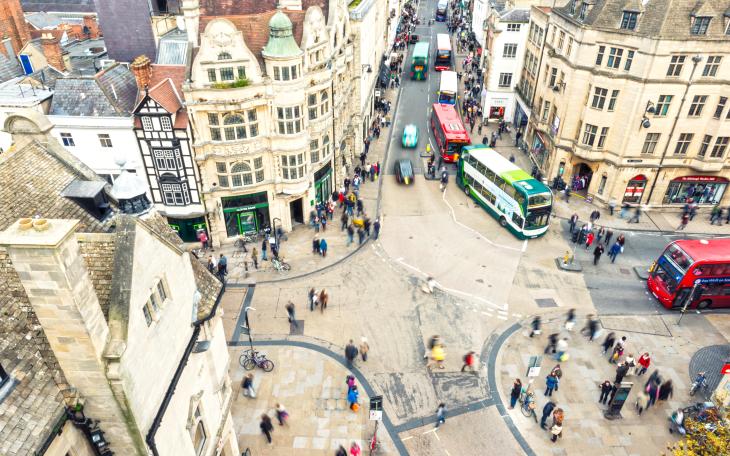The 15-minute city: 2023’s unexpected conspiracy theory

By Emma Goodwin
In the latest instalment of 2023’s ‘what on earth?’ moments, there’s a new conspiracy theory in town: town planning and the 15-minute city.
A few years ago, I wrote for this very newsletter about how we can adapt our existing urban centres to become 15-minute cities and whether our cities are really made for walking – an important question in the context of the pandemic and how it changed people’s local requirements.
Two years on, by some strange turn of events, what was previously a much-applauded answer to bettering the urban living experience, the 15-minute city has somehow become its own conspiracy theory – allegedly a tool to curtail free movement and control the population, in some sort of modern version of 1984.
It is the poor old city of Oxford, and Oxford City Council’s plans for traffic filters, that has really kickstarted this conspiracy theory. In short, the plans aim to reduce the number of cars and trucks passing through the city centre, part of which means residents will need to apply for permits to drive on certain streets – not wholly dissimilar to London’s own congestion zone and almost identical in principle to the traffic cameras already in place in Oxford.
Cue a swathe of angry opposers and headlines reporting that people will be “locked down” in certain areas of the city. Naturally, any headline featuring the words “lock” and “down” fill many with dread, an unpleasant reminder of the sour taste of the pandemic.
But reading into the plans a little more, herding people into pens (and not letting them leave) is not what is being proposed. It’s not even really a 15-minute city initiative, but rather an attempt to ease the terrible congestion the city experiences on a daily basis.
The wider controversy even made its way to the House of Commons, with Conservative MP for South Yorkshire, Don Valley, describing 15-minute cities as an “international socialist concept”. Quite the claim.
So, what is it that is quite so offensive about the idea of creating places that are a little more people-friendly?
The arguments against the 15-minute city feel somewhat twisted. The point isn’t to prevent people from going beyond the confines of their immediate surroundings, but rather give them the option ofhavingtheirday-to-day needs met by local convenient amenities. It’s about creating pedestrian-friendly, healthier, and more sustainable neighbourhoods.
The use of active travel – being able to walk or cycle rather than relying on driving – is key. In turn, that might mean the minor inconvenience of having to drive a bit further round a ring road than through the centre of town. However, the long-term benefits of initiatives like more pedestrianised areas, more cycle lanes or wider pavements far outweigh these shorter-term irritations, and the idea that they constitute an infringement of residents’ rights seems a leap too far.
Aside from the obvious environmental impact of less car usage, the social and wellbeing benefits for residents are clear. Perhaps I’m oversimplifying it, but surely having our daily needs catered for – be it access to shops, green space or wider transport links - within a short walk or cycle, might actually be quite a nice way to live?








